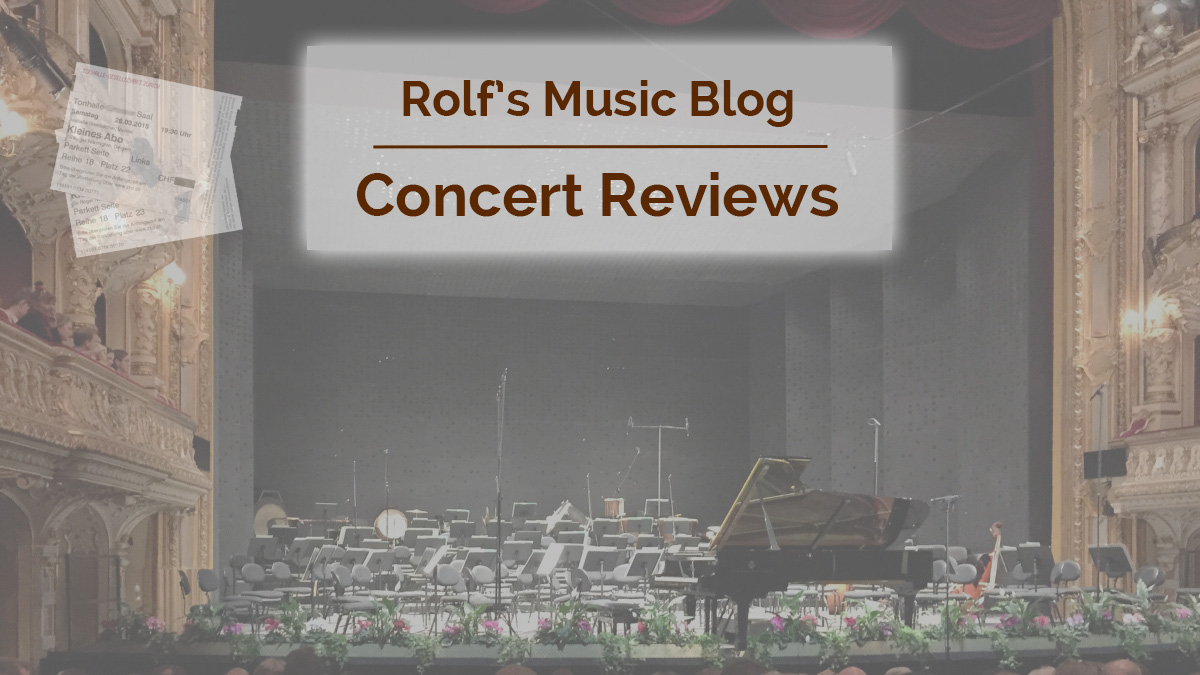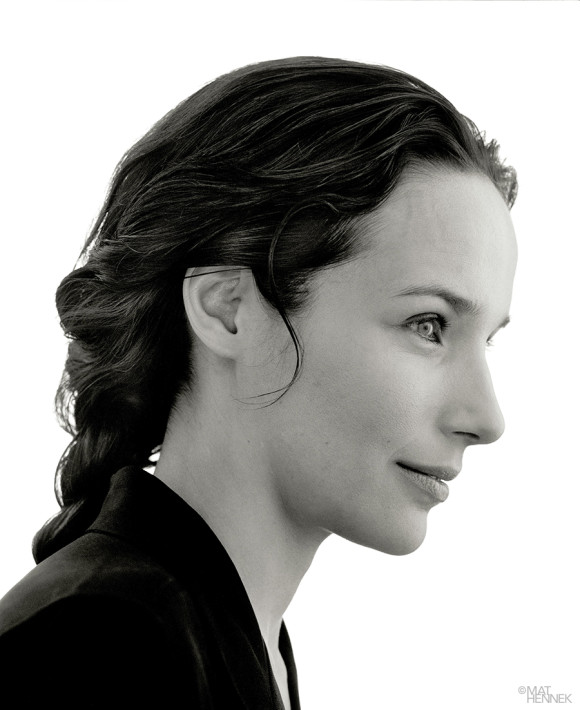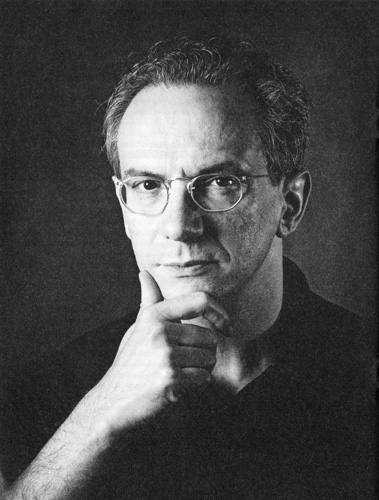Hélène Grimaud, Fabio Luisi / Philharmonia Zurich
Beethoven / Tchaikovsky
Opera Zurich, 2018-01-14

2018-01-21 — Original posting
Ausgereiztes Wechselbad und Faszination: Grimaud und Luisi mit der Philharmonia Zürich — Zusammenfassung
In Beethovens Klavierkonzert Nr.4 in G-dur (op.58) reizte Hélène Grimaud die Zusammenarbeit mit dem Orchester mit Temposprüngen aus—ein Wechselbad von lyrischem Spiel und Vorwärtsdrängen. Am besten gelang der Mittelsatz, in welchem das Orchester nicht begleitet, sondern in eine Art Dialog mit dem Klavier tritt.
Dafür präsentierte sich die Philharmonia unter Fabio Luisi bei Tschaikowskys Fünfter Sinfonie in e-moll, op.64 in Bestform: ein durchweg faszinierendes Konzerterlebnis: die Konzertsaison am Opernhaus startete mit einem wahren Höhepunkt, der hoffen ließ, dass die Tschaikowsky-Sinfonie ihren Weg auf eine CD finden wird!
Table of Contents
Introduction
In the Zurich Opera for the first concert in 2018, and for the first Philharmonic Concert in the new year, with the Philharmonia Zurich and the orchestra’s principal conductor, Fabio Luisi (*1959, see also Wikipedia). It looked like a splendid start for the year: the concert was sold out. Several factors contributed to this: the Philharmonia Zurich has a fairly big fan community, i.e., there are many subscription holders. Also, they profit from the fact that its “competition” on the concert stage, the Tonhalle Orchestra Zurich, was forced to move to a non-central, temporary location, the Tonhalle Maag, in Zurich’s West. The latter may be a trendy new quarter, but older people seem to prefer a venue close to the center of town.
An Attractive Program
The concert included both a classic and a romantic highlight—two “hits” in classical music. The second half of the evening featured Tchaikovsky’s Fifth Symphony, a Russian “delicacy”. It’s one of the most popular romantic symphonies altogether. Though, it’s not just the popular composition as such: romantic and late romantic orchestral works are a particular strength of the Philharmonia Zurich and of Fabio Luisi. On top of that, past concerts demonstrated that the specific, dry acoustics of the opera house, and the stage setup for the orchestra prove ideal for such music. Overall, this brings out qualities that are hard to produce in other concert venues. This alone set the expectations for the evening very high.
Concerto and Soloist
On top of the above, a classic concerto opened the evening: Beethoven’s piano concerto No.4 in G major, op.58, is likely the most popular, the most “easy-to-grab” (and get into) of Beethoven’s concerto compositions. Along with the Violin Concerto in D major, op.61, of course.
The soloist in Beethoven’s piano concerto was the French pianist Hélène Grimaud, born 1969 in Aix-en-Provence. From 1982 on, she studied with Jacques Rouvier (*1947) at the Conservatoire de Paris. She won a first prize at the conservatory in 1985, and in 1987, she successfully launched an international concert career. A multi-faceted personality, she hardly fits into preconceived schemes. I don’t just conclude this from her interpretations (also found on YouTube), but also from her appearance in concert. The way in which she dressed often seemed to express that she decidedly wanted to distance herself from conventional / traditional standards.
Beethoven: Piano Concerto No.4 in G major, op.58
I don’t need to introduce the Piano Concerto No.4 in G major, op.58 which Ludwig van Beethoven (1770 – 1827) composed in 1805/1806: I have already discussed live performances of this concerto in earlier posts. Here are the movement in this concerto:
- Allegro moderato (4/4)
- Andante con moto (2/4)
- Rondo: Vivace (2/4)
The Performance
I reference to the above remarks on Hélène Grimaud: in this concert, she was wearing a formal, solemn black pant dress (with peach-colored shoes): well-adapted to the festive frame of the Philharmonic Concerts at the Zurich Opera House. More interestingly even, she appeared with gray hair in a short cut (so far, she was known with longer hairs only, from blonde to dark, either open, or with a pony tail).
Were these signs for new artistic views, maybe radical changes in her interpretations? Well, not really, as it turned out. Her look seemed to be mostly that: the surface. One could tell that already from the youthful, occasionally even waggish expression on her face, the freshness in her playing. While playing, she often looked at the instrument with a dreamy smile, and her lips sometimes seemed to indicate that she was talking to the instrument. Of course, the key part of the concert experience was what we heard with our ears!
I. Allegro moderato
One could easily find characteristics of her playing already in the introductory, 5-bar solo, which Beethoven marked p, dolce. The articulation was definitely mellow, some of the staccati were hardly recognizable as such, her playing in these bars distinctly lyrical. Grimaud formed the five bars into a single phrase, with a clear slow-down towards the sforzato, and with a distinct resting point at the climax.
Fabio Luisi picked up the pianist’s moderate tempo. Only when the wind instruments set in, he gradually, almost unnoticeably accelerated. I immediately noted the distinctly careful, detailed articulation, the meticulously balanced dynamics within the orchestra. Despite the fair size of the ensemble, Luisi managed to make the work sound almost like chamber music. The pianist certainly observed Beethoven’s annotations in the score. However, the dominating feature in her playing seemed to be the soft touch, the musical flow and the momentum that Grimaud used to form the big arches, the phrases. In terms of articulation in motifs, as well as in agogics, i.e., the rhythmic weight given to the heats within a bar, other artists offer much more detail (even ignoring historically informed performances on period instruments).
Interactions
To me, the most striking feature of the performance was the interplay (not to say rollercoaster) between lyrical and impulsive segments. In the latter, the pianist was pushing forward, often used a fairly distinct rubato, even jumps in the tempo that seemed arbitrary. Though, I don’t think “arbitrary” is the right expression here: it’s more that Hélène Grimaud appeared to act spontaneously, developing her interpretation on-the-spot. Almost regularly, she started her solo segments at a faster tempo. Thereafter, she was still pushing forward, rarely ever slowing down in her pace.
Fabio Luisi tried his best to follow the pianist’s impulsive playing. Though, these efforts were only partly successful: occasionally, the coordination between solo and accompaniment, even within the orchestra, was somewhat shaky.
The above characteristics in Grimaud’s playing also applied to the cadenza: the artist selected the usual, longer one of two cadenzas proposed by the composer.
II. Andante con moto
The best part of the performance was the slow movement. Here, solo and orchestra are not playing together, but rather in alternating segments. They present strongly contrasting characters, sometimes referred to as Orpheus—piano—trying to tame the furies—the orchestra—in the underworld: resolute, abrupt statements by the orchestra, interrupted by imploring, warmly singing pleas by the piano. Grimaud’s arpeggiando playing was maybe on the strong side. I prefer this to be a means of expression: it should not appear too obvious, as a “feature”. Grimaud’s expressive rubato playing may have put more expression into the solo part than what seems agreeable with Beethoven’s una corda annotation through most of the movement.
III. Rondo: Vivace
With the third movement, the coordination issues, the discrepancies from the first movement returned, were even more obvious. Sometimes ist almost felt as if the orchestra was stressed by the demands imposed by the soloist. Sure, technically, one can’t criticize the pianist. There were no weaknesses, runs and scales were remarkably smooth and even. I would definitely claim that her playing wasn’t aiming at superficial virtuosity and brilliance: it was rather dominated by spontaneity. However, I felt that there was too much impulsiveness, bordering at being arbitrary. Or, was there not enough time to coordinate the interpretation in rehearsals?
Encore
Hélène Grimaud played a two-minutes encore, which I was not able to identify. It first reminded me of Rachmaninoff or Tchaikovsky, then seemed to move into French impressionism: music without a recognizable form. My conclusion was that this must have been an improvisation.
Tchaikovsky: Symphony No.5 in E minor, op.64
The Symphonies No.4, 5, and 6 by Pyotr Ilyich Tchaikovsky (1840 – 1893) are all very well-known. The Symphony No.5 in E minor, op.64, premiered in 1888, the year of its composition. The symphony features four movements:
- Andante — Allegro con anima — Molto più tranquillo
- Andante cantabile, con alcuna licenza — Non allegro — Andante maestoso con piano
- Valse: Allegro moderato — Trio
- Finale: Andante maestoso — Allegro Vivace — Molto vivace — Moderato assai e molto maestoso — Presto
The instrumentation includes 3 flutes (& piccolo), 2 oboes, 2 clarinets, 2 bassoons, 4 horns, 2 trumpets, 3 trombones, bass tuba, timpani, strings. I have discussed concert performances of this symphony elsewhere in my blog.
The Performance
I. Andante — Allegro con anima — Molto più tranquillo
The true highlight of the evening—expectedly—was Tchaikovsky’s symphony. This gave Fabio Luisi and the orchestra an opportunity to present themselves at the height of their abilities. I found true excellence in the transparency and the clarity if the sound, in the outstandingly diligent articulation, which never appeared academic or overly meticulous, though. The performance was moderate in terms of dynamics and build-ups: Fabio Luisi knew exactly how best to take advantage of the dry acoustics of the venue for the complex textures of music from the romantic era.
Nothing in the performance was pure show, and—unlike how this symphony is often presented in concert halls. The brass section was not dominating, let alone oppressing. Here, the dense sound of the strings (sitting above the orchestra pit, literally in the auditorium) was the most prominent component. The woodwind players sat not too far behind the proscenium arch. They were in the right spot to be heard and also mix with the sound of the strings. In this symphony, primarily the clarinets, but also oboes, bassoon, and flute could certainly expose their outstanding, wonderful contributions. For the brass section (outstanding horns!) and the timpani in the rear, the depth of the opera stage guaranteed a perfectly balanced sound, while still ensuring enough presence.
I could not resist a little smile when Fabio Luisi switched to a distinctly faster pace, where Tchaikovsky writes un pochettino più mosso (after “U” in the score). I would read this as “a tiny little bit faster”. However, I don’t see this as mistake or as arbitrariness: everybody seems to follow that path at this point.
II. Andante cantabile, con alcuna licenza — Non allegro — Andante maestoso con piano
The composer starts this movement in the low strings, all p, while the annotation reads con alcuna licenza (with some freedom). Luisi developed this out of the finest, mysterious ppp, and after a short crescendo / decrescendo, the excellent horn solo sets in with its beautiful melody, later joined by the clarinet, then the oboe briefly breaks out from the initial melancholy. It’s a typical Tchaikovsky invention, marvelous! And again, Luisi managed to make this beginning sound like chamber music. His shaping of the music in phrasing, dynamics, agogics and rubato once more felt absolutely compelling, throughout. Also in terms of tempo, the performance felt natural, moderate: Luisi has an extraordinary feel for the “right pace”.
The orchestra as a whole performed convincingly, impressively, also in the dynamic span, not only in the finest pppp (!), but also with the impressive volume, where the movements erupts into a broad, almost epic climax, where the score asks for ffff.
III. Valse: Allegro moderato — Trio
The third movement is a waltz with a melancholic melody, Allegro moderato. Fabio Luisi started at the pace specified by the composer (1/4 = 138), definitely with a good, swaying “waltz feeling”. The challenge for the orchestra comes after “D” in the score, where the strings (later also the woodwinds) have long sequences of semiquavers, annotated spiccato assai. The conductor persistently maintained the initial pace: maybe, slightly relaxing the pace would have been in order, as several times, the passing of the semiquaver motifs between the voices was less than perfect. Also an excellent orchestra has its limitations!
I liked that Fabio Luisi chose not to broaden the short ff ending, avoiding unnecessary pathos.
IV. Finale: Andante maestoso — Allegro Vivace — Molto vivace — Moderato assai e molto maestoso — Presto
The Finale starts with a truly majestic theme in the strings: a grandiose invention. Luisi resisted letting the orchestra off the leash (he knows how to build up tension!), while playing out the grandeur of the music. The tension is released with the Allegro vivace. Here in particular (but also throughout the evening, of course), I admired the excellent lead roles of the first string desks. In this context, I must of course mention the concertmaster, Bartłomiej (Bartek) Nizioł.
This last movement often turns into a brass feast. Yes, the brass section as excellent, even brilliant throughout—but thanks to the stage setting, the brass sound never took over completely, but provided a harmonious contribution to the overall soundscape, in which the lead role remained with the strings. I can’t resist mentioning the excellent contribution by Renata Walczyna at the timpani: a key component in Tchaikovsky’s music!
Conclusion
With this symphony, a fascinating listening experience throughout, the concert year 2018 in the Zurich Opera House started with a true highlight: the enthusiastic applause was definitely justified! I just hope that the Tchaikovsky’s op.64 finds its way onto a CD recording!?
Addendum
For the same concert, I have also written a (shorter) review in German for Bachtrack.com. This posting is not a translation of the Bachtrack review, the rights of which remain with Bachtrack.com. I created the German review using a subset of the notes taken during this concert. I wanted to enable my non-German speaking readers to read about my concert experience as well. Therefore, I have taken my original notes as a loose basis for this separate posting. I’m including additional material that is not present in the Bachtrack review.



